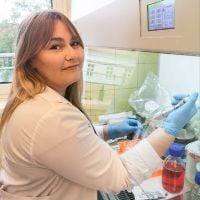Advances in Pig Reproductive Endocrinology
A special issue of Animals (ISSN 2076-2615). This special issue belongs to the section "Pigs".
Deadline for manuscript submissions: 31 August 2024 | Viewed by 1484
Special Issue Editors
Interests: reproduction; endocrinology; pregnancy; oestrous cycle; adipokines; uterus; HPG axis; ovaries; pig
Special Issues, Collections and Topics in MDPI journals
Interests: reproduction; endocrinology; pregnancy; oestrous cycle; adipokines; uterus; HPG axis; pituitary; ovaries; pig
Interests: reproduction; endocrinology; pregnancy; oestrous cycle; adipokines; uterus; HPG axis; ovaries; pig
Interests: pig; reproduction; uterus; ovary; pituitary; endometrium; myometrium; oviduct; pregnancy; omics techniques; in vitro culture
Special Issues, Collections and Topics in MDPI journals
Special Issue Information
Dear Colleagues,
The pig is one of the most economically important farm species worldwide. Advances in pig reproductive endocrinology have significantly impacted the swine industry in recent years.
Despite the fact that over the past three decades efficient breeding and management has almost doubled the litter size in this species, it was estimated that about 20 to 40% of morphologically and genetically normal embryos are lost during the early phases of pregnancy. On the other hand, a large litter may be challenging for the pig's metabolism, leading to difficulties in resuming ovarian cyclicity after weaning, especially in young animals. Other important factors affecting pig reproductive health are environmental endocrine disruptors that may influence the functioning of both female and male hormonal balance. To meet these challenges, new strategies in synchronization protocols, artificial insemination techniques, hormone treatments, embryo transfer, and genomic selection have to be developed, based on in-depth knowledge of pig reproductive endocrinology.
This Special Issue focuses on recent innovative advances in pig reproduction strategies that aim to improve reproductive efficiency, as well as newly discovered factors affecting the functioning of organs and tissues related to reproduction in this species.
Dr. Marta Kiezun
Dr. Katarzyna Kisielewska
Dr. Marlena Gudelska
Dr. Agata Żmijewska
Guest Editors
Manuscript Submission Information
Manuscripts should be submitted online at www.mdpi.com by registering and logging in to this website. Once you are registered, click here to go to the submission form. Manuscripts can be submitted until the deadline. All submissions that pass pre-check are peer-reviewed. Accepted papers will be published continuously in the journal (as soon as accepted) and will be listed together on the special issue website. Research articles, review articles as well as short communications are invited. For planned papers, a title and short abstract (about 100 words) can be sent to the Editorial Office for announcement on this website.
Submitted manuscripts should not have been published previously, nor be under consideration for publication elsewhere (except conference proceedings papers). All manuscripts are thoroughly refereed through a single-blind peer-review process. A guide for authors and other relevant information for submission of manuscripts is available on the Instructions for Authors page. Animals is an international peer-reviewed open access semimonthly journal published by MDPI.
Please visit the Instructions for Authors page before submitting a manuscript. The Article Processing Charge (APC) for publication in this open access journal is 2400 CHF (Swiss Francs). Submitted papers should be well formatted and use good English. Authors may use MDPI's English editing service prior to publication or during author revisions.
Keywords
- pig
- reproduction
- endocrinology
- hormones
- artificial insemination
- estrus cycle synchronization
- embryo transfer
- genomic selection
- pregnancy
- litter
- implantation
- weaning
- omics









